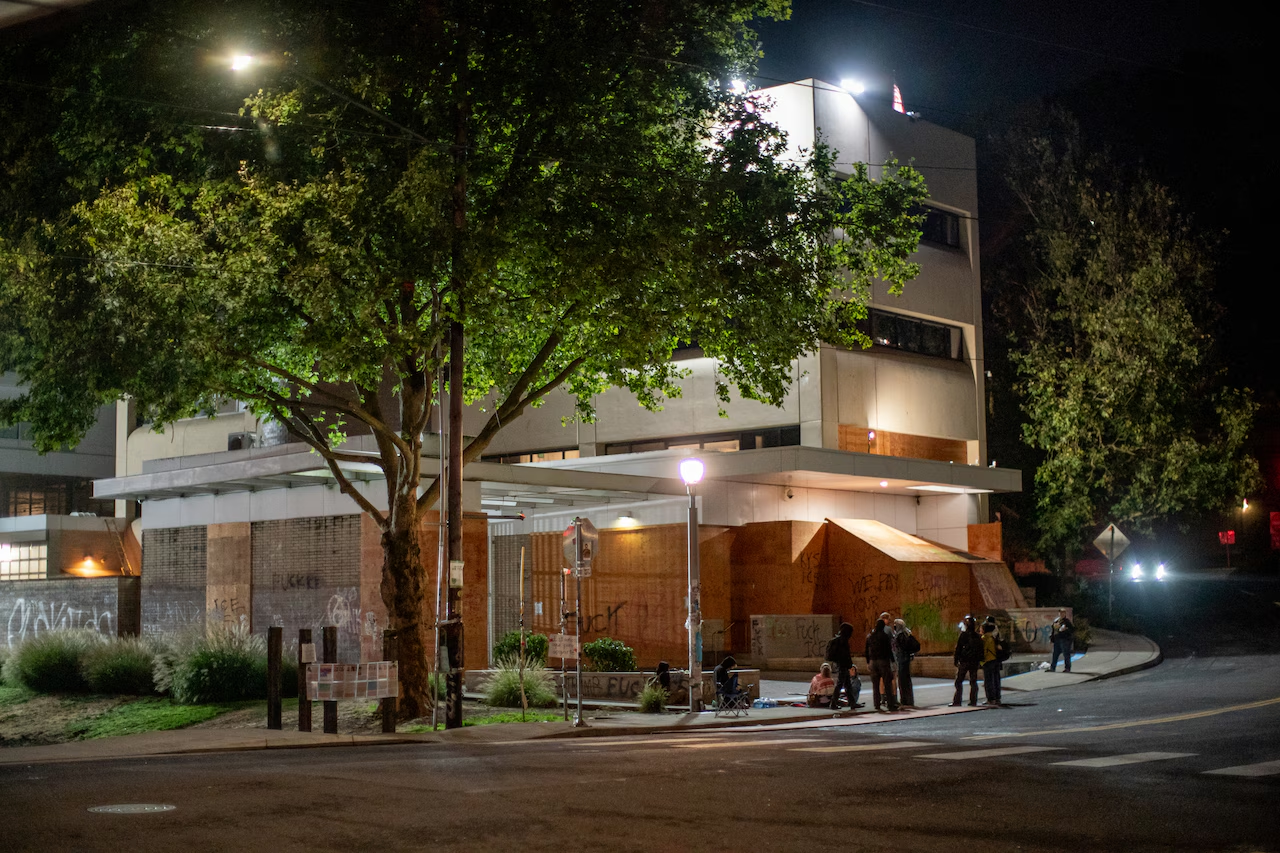PORTLAND, Ore. — Federal officers have arrested more than two dozen people outside Portland’s Immigration and Customs Enforcement (ICE) facility since June, but the pace of arrests has slowed significantly after an initial wave of large demonstrations.
Early Surge of Arrests
Protests at the ICE field office along South Portland’s waterfront began in June as part of a broader response to President Donald Trump’s immigration crackdown. That month saw the largest crowds, with hundreds of people gathering outside the facility.
Federal officers made 18 arrests during June alone, charging individuals with offenses ranging from vandalism and blocking vehicles to aggravated assault on federal officers. On July Fourth, another large gathering resulted in four additional arrests.
Also Read
Since then, crowds have thinned to just a few dozen demonstrators at a time, and the number of arrests has dropped sharply.
Charges and Allegations
Those arrested have faced an array of federal charges. Allegations include:
-
Damaging property at the ICE building.
-
Disrupting the electronic key card reader used to operate the gated entrance.
-
Blocking federal vehicles from entering or leaving the facility.
-
Throwing rocks, sticks, or other objects at officers.
-
Shining green lasers into officers’ eyes.
-
Interrupting internet service inside the building by tampering with fiber-optic cables.
-
Barricading gates with cones, lumber, tables, and even electric scooters.
Charges range from felony destruction of government property and aggravated assault on federal officers to misdemeanors such as failing to follow lawful orders.
Who Has Been Arrested
Most defendants are Portland residents, though others have come from nearby communities including Oregon City, Beaverton, Gresham, Grand Ronde, Merlin, and coastal towns like Gearhart and Seaside. A handful traveled from out of state, including Tacoma, Vancouver, and Kelso in Washington, and one individual from Michigan.
Federal and Local Law Enforcement
Multiple agencies have been involved in policing the demonstrations. Officers from Federal Protective Services, Homeland Security, Border Patrol, and ICE have all made arrests. Portland police initially arrested about two dozen people in June but have since stepped back, allowing federal law enforcement to take the lead.
Prosecutors have sought to protect the identities of federal officers in court filings, citing concerns that personal information could be used to harass or dox officials and their families.
Court Outcomes and Restrictions
Most defendants charged in federal court have been released while awaiting trial. Judges have imposed strict conditions, including bans on returning to the ICE facility. The restricted area extends from South Gaines Street to the north, Boundary Street to the south, Southwest Terwilliger to the west, and the Willamette River to the east.
Defendants are also barred from possessing weapons, lasers, fireworks, mortars, or similar devices. At least two individuals have violated release conditions by returning to the restricted area. Judges responded with stern warnings and findings of violation but allowed them to remain out of custody under tighter supervision.
Several cases have already resulted in plea agreements. Three defendants received six months’ probation after pleading guilty to misdemeanor failure to follow lawful orders. Five more are expected to enter guilty pleas in the coming weeks.
Leaders Push Back on Federal Troop Deployment
The slowing pace of protests and arrests has raised questions about the federal government’s recent announcement of sending additional troops to Portland. On Saturday, after Trump authorized deployments, Oregon Governor Tina Kotek convened a press conference on the banks of the Willamette River.
“We don’t need help. We got this,” Kotek said, emphasizing that demonstrations outside the ICE building remain relatively small and controlled. “There’s not a problem at the federal facility, and when there is a situation that requires police enforcement, it is happening and we are holding people accountable.”
Portland Mayor Keith Wilson and Police Chief Bob Day echoed the governor’s remarks, stressing that the city’s approach has been effective without escalating tensions.
Lessons From 2020
Officials and observers have repeatedly compared today’s smaller demonstrations to the mass protests of 2020, when nightly unrest followed the killing of George Floyd. At that time, the Trump administration sent 755 federal officers to Portland, including personnel from the Federal Protective Service, Customs and Border Protection, ICE, and the Secret Service.
A subsequent U.S. Department of Justice inspector general’s report found that the deployment lacked coordination. Not all officers had proper training or equipment, and their use of inconsistent uniforms and tactics further inflamed tensions.
The federal presence, initially intended to secure the Mark O. Hatfield U.S. Courthouse, instead reignited protests that had begun to wane. Clashes between demonstrators and officers stretched on for weeks, involving repeated use of tear gas and non-lethal munitions.
The inspector general estimated the cost of the 2020 federal operation at $12.3 million. Damage to the courthouse itself was pegged at $1.6 million.
Current Outlook
For now, demonstrations at the ICE facility remain modest compared to those past events. Leaders in Oregon maintain that local and federal officers already stationed in Portland are capable of handling disruptions without additional troop deployments.
As court cases continue to move forward, the legal system is addressing the actions of demonstrators with probation, conditions of release, and ongoing prosecutions — a stark contrast to the turbulent nights of 2020.












